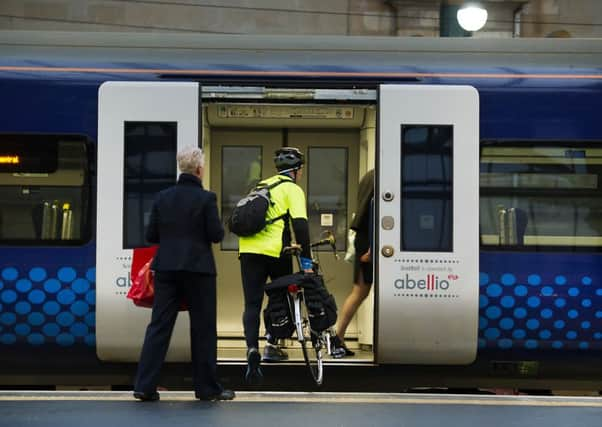Alastair Dalton: ScotRail door control not an open-shut issue


It centres on whether conductors or drivers should check that doors are clear and close them so the train can depart. If you travel on most ScotRail trains in and around Glasgow, it’s the driver – as it has been for 30 years. On almost all trains elsewhere, the job is done by a conductor.
So why the difference? Driver control in Glasgow was agreed by the unions to cut the cost of running trains and save many lines from closure in the 1980s. But the Rail, Maritime and Transport union (RMT) opposes any extension to this, and I understand it only reluctantly conceded it for the Airdrie-Bathgate line when it re-opened in 2010 – after a series of one-day strikes – as there was already driver control on the existing section between Glasgow and Airdrie.
Advertisement
Hide AdAdvertisement
Hide AdThe issue has arisen again over a new fleet of trains due to start running on the main Edinburgh-Glasgow line and other Central Belt routes from next year. The Japanese-designed Hitachi trains are seen as crucial in both providing much-needed extra seats, and releasing carriages to ease crowding on other lines, such as the Borders Railway.
ScotRail wants drivers to control the doors, with conductors left to check tickets. On some services, it plans to replace conductors with lower-paid ticket examiners, as on the driver-controlled Glasgow trains.
This was a dispute that could be seen coming ten years ago, since the announcement of the Edinburgh-Glasgow line upgrade, which would involve new trains.
Both sides’ positions are essentially the same as they were during the last dispute. ScotRail points to the safe operation of driver-controlled trains for decades, on which more than half its 90 million annual trips are made. The RMT says conductors play a vital safety role, which must be retained.
I hear that there have been talks since last October, but the way things have been going recently don’t seem to have helped anyone, and may have brought industrial action closer.
Scotland on Sunday revealed in March that the proposals to change conductors’ roles on the new trains was sent in a letter to staff – even though they had not been formally put to union officials. I’m told it was an attempt to respond to rumours circulating depots, but the move appears to have backfired because the discontent it caused led to unofficial action being taken on Sundays, when ScotRail still relies on staff working overtime.
That culminated in last weekend’s disruption, which could well be repeated this Sunday.
I have learned the letter has been withdrawn, and that sending it out was acknowledged internally to have been a mistake.
Advertisement
Hide AdAdvertisement
Hide AdTensions will not have been eased by ScotRail managing director Phil Verster describing the ballot as “inexplicable” because formal plans have not been tabled – when the train operator’s intentions are pretty clear.
I’m told this dispute isn’t likely to be a watershed: if ScotRail wins, there won’t be moves to remove conductors from other trains. However, ScotRail still has a mountain to climb to get it resolved.